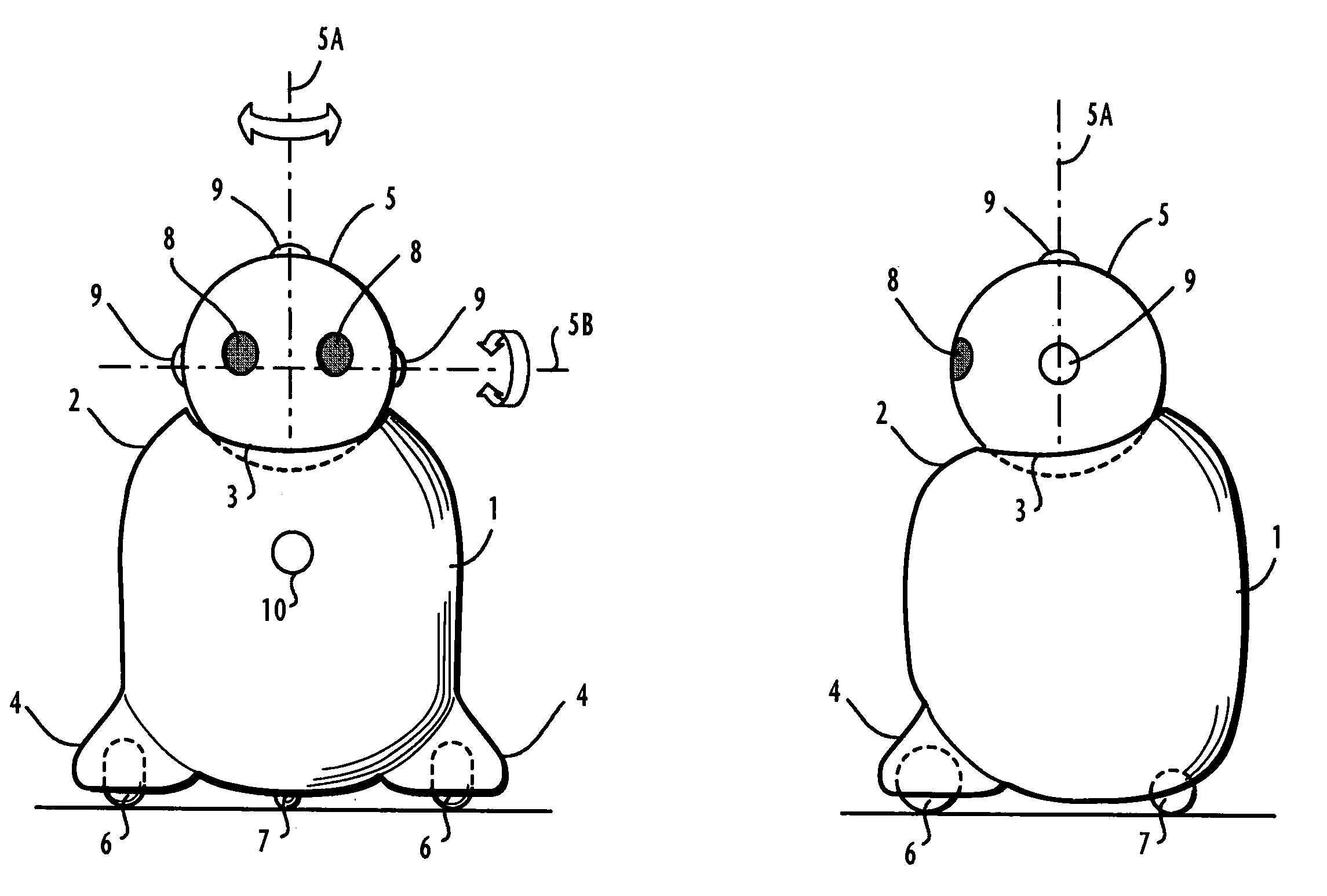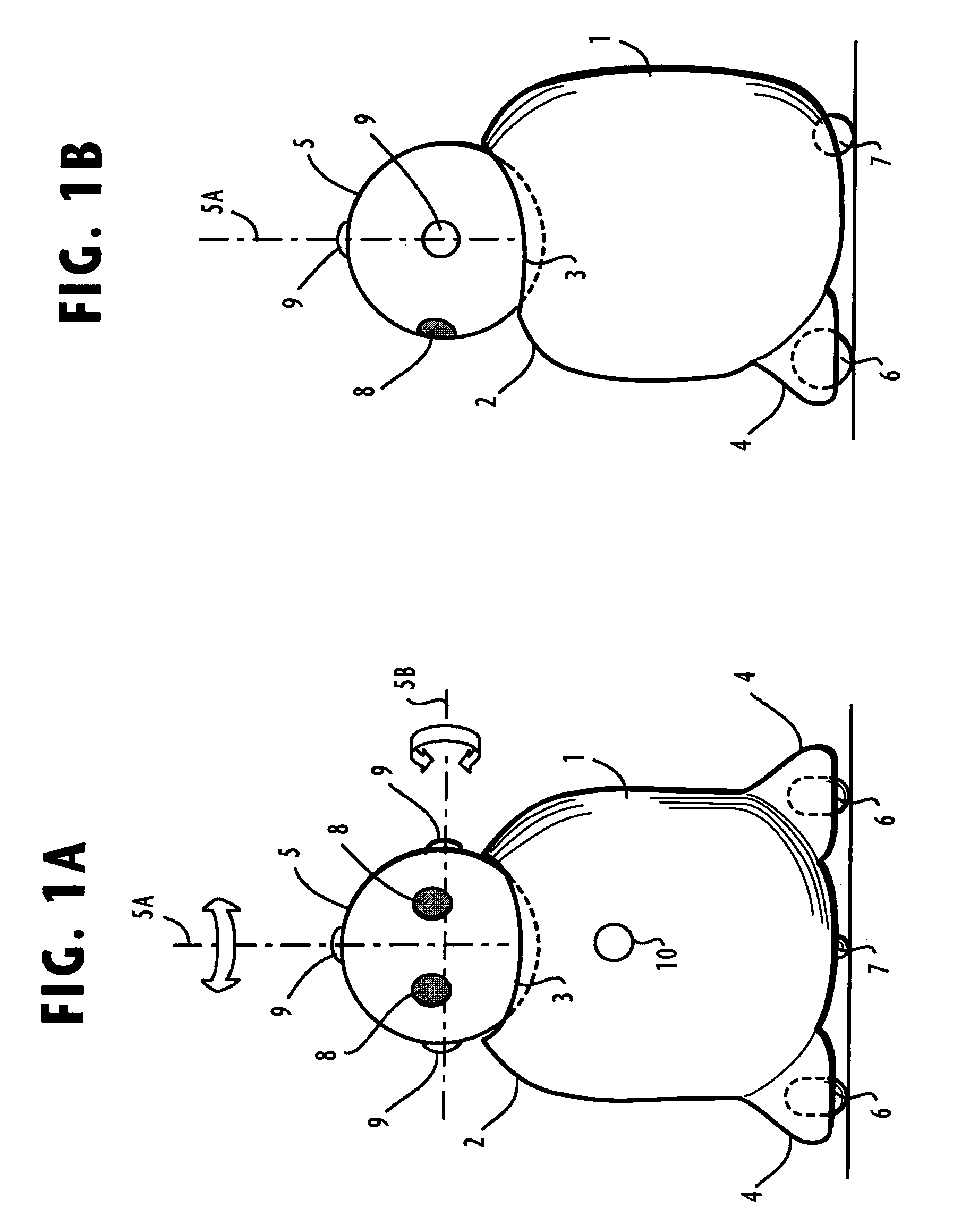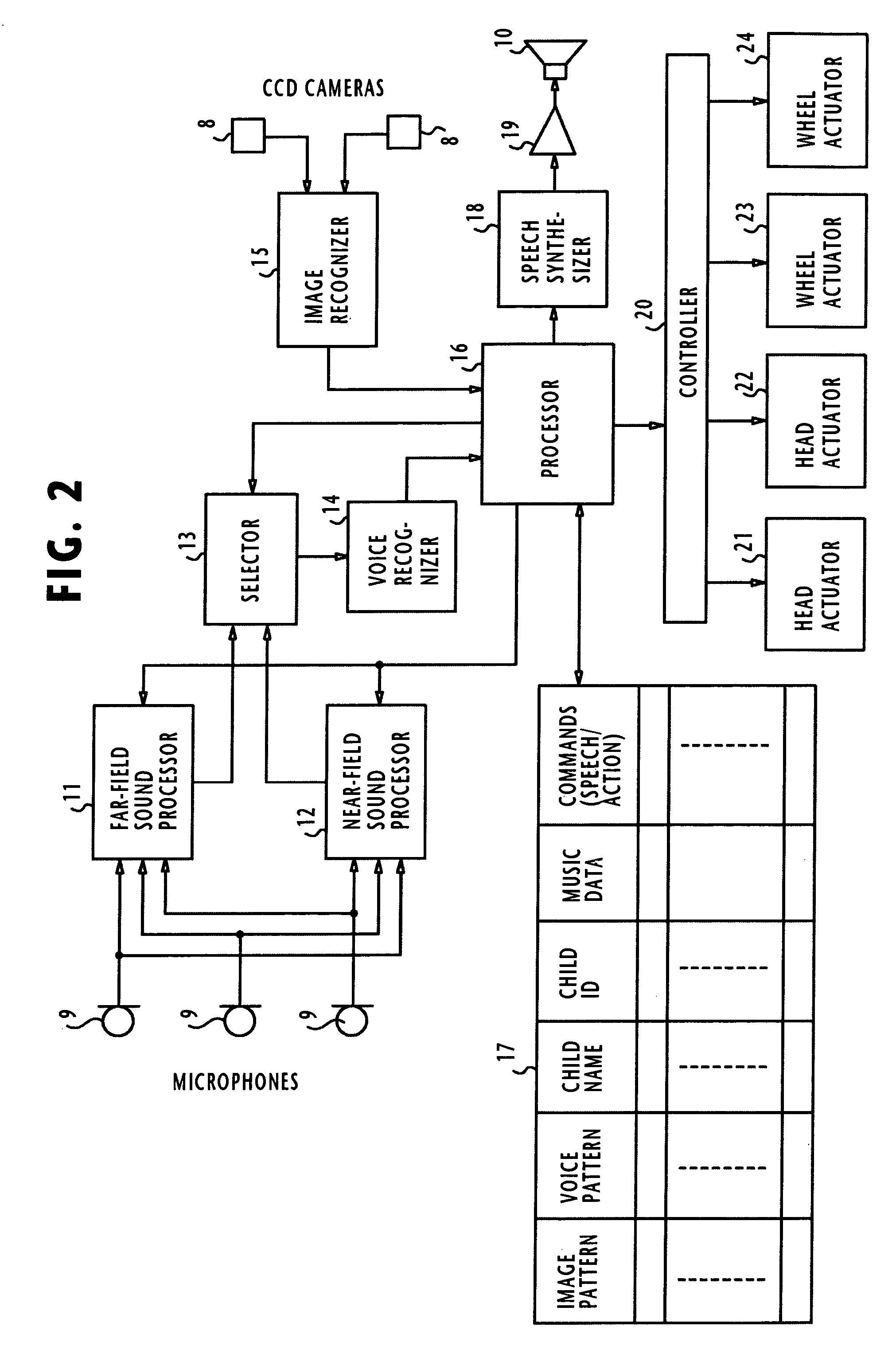Child-care robot and a method of controlling the robot
a technology of child care robot and robot, which is applied in the field of robots, can solve the problems of reducing the number of non-admitted children to zero, prior art playmate and nursing robots are unsatisfactory to meet the need of reducing the personnel expenditure of nursery schools, and achieve the effect of reducing the burden on child care and hence the personnel expenditur
- Summary
- Abstract
- Description
- Claims
- Application Information
AI Technical Summary
Benefits of technology
Problems solved by technology
Method used
Image
Examples
first embodiment
[0035]the robot is shown in FIG. 2. As illustrated, the robot includes a far-field sound processor 11 and a near-field sound processor 12 connected to the microphones 9, and an image recognizer 15 connected to the CCD cameras 8. A selector 13 is provided for selecting one of the outputs of sound processors 11, 12 according to the output of a processor 16 and supplies its output to a voice recognizer 14. Processor 16 is responsive to the outputs of voice recognizer 14 and image recognizer 15 to consult a pattern memory 17 to take an appropriate robot action. The output signal of the processor 16 is coupled either to a speech synthesizer 18 or a controller 20 or both. The output of speech synthesizer 18 is supplied through an amplifier 19 to the loudspeaker 10 to produce a synthesized human voice.
[0036]The robot includes a pair of head actuators 21 and 22 for respectively controlling the orientation of the head 5 in vertical and horizontal angular positions and a pair of wheel actuato...
second embodiment
[0048]the robot is shown in FIG. 4 in which part corresponding in significance to those of FIG. 2 are marked with same numerals and the description thereof is omitted.
[0049]In FIG. 4, instead of the pattern memory 17 of FIG. 2, a children data memory 31, a captured data memory 32, an action pattern memory 33 and parents data memory 34 are provided. The robot further includes a web server 35, which is connected between the processor 16 and a wireless interface 36. The latter establishes a wireless link with a stationary wireless interface 40 located in a fixed position with respect to the robot. Wireless interface 40 is connected to a communications network 41 (such as public switched telephone network, mobile communication network, or IP network) through which the web server 35 of the robot can communicate with parents HTTP terminals 42.
[0050]Children data memory 31 contains a plurality of fields (columns) for mapping different voice patterns and different facial patterns of each ch...
third embodiment
[0062]According to the present invention, the robot is provided with a video screen 61 on its front side, as shown in FIG. 9. A block diagram of the robot of FIG. 9 is shown in FIG. 10. A video processor 60 is connected to the processor 16 to process a stored or received parent's image and displays it on the video screen 61.
[0063]The operation of the processor 16 of FIG. 10 proceeds according to the flowchart of FIG. 11, in which the trigger event is a request from children to establish contact with parents.
[0064]The program routine begins with step 301 by checking to see if a child is requesting contact with parents. If so, flow proceeds to step 302 to examine the parents data memory 34 and determine if a phone number is available. If a phone number is available, a call is originated (step 303). If the call is answered (step 304), a hands-free speech communication is established between the requesting child and the parent (step 305). If a parent's image is received (step 306) or a ...
PUM
 Login to View More
Login to View More Abstract
Description
Claims
Application Information
 Login to View More
Login to View More - R&D
- Intellectual Property
- Life Sciences
- Materials
- Tech Scout
- Unparalleled Data Quality
- Higher Quality Content
- 60% Fewer Hallucinations
Browse by: Latest US Patents, China's latest patents, Technical Efficacy Thesaurus, Application Domain, Technology Topic, Popular Technical Reports.
© 2025 PatSnap. All rights reserved.Legal|Privacy policy|Modern Slavery Act Transparency Statement|Sitemap|About US| Contact US: help@patsnap.com



